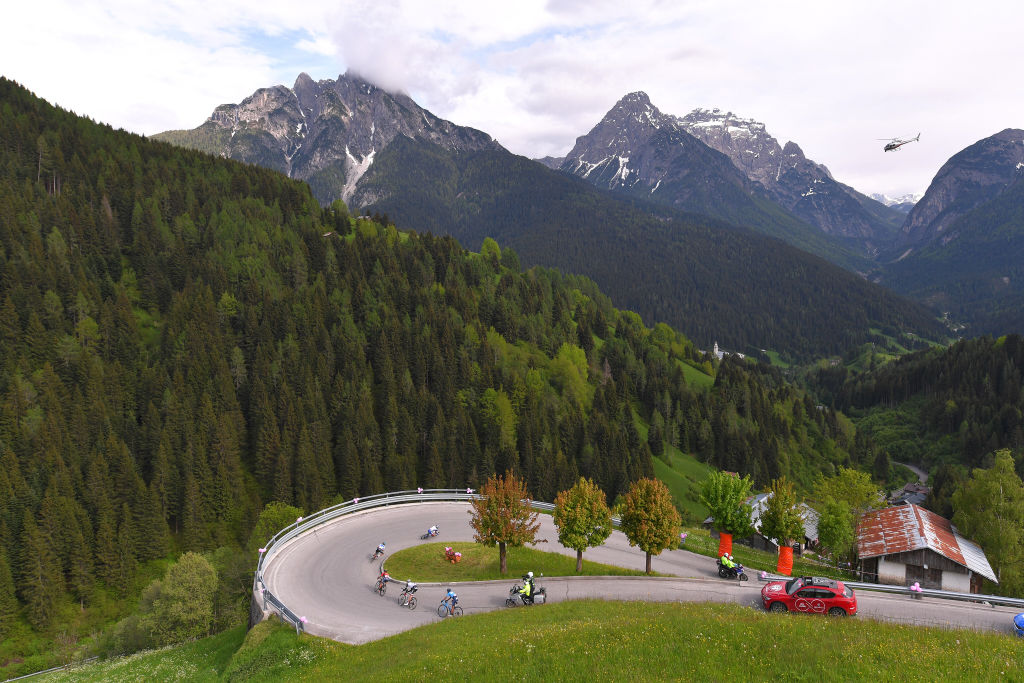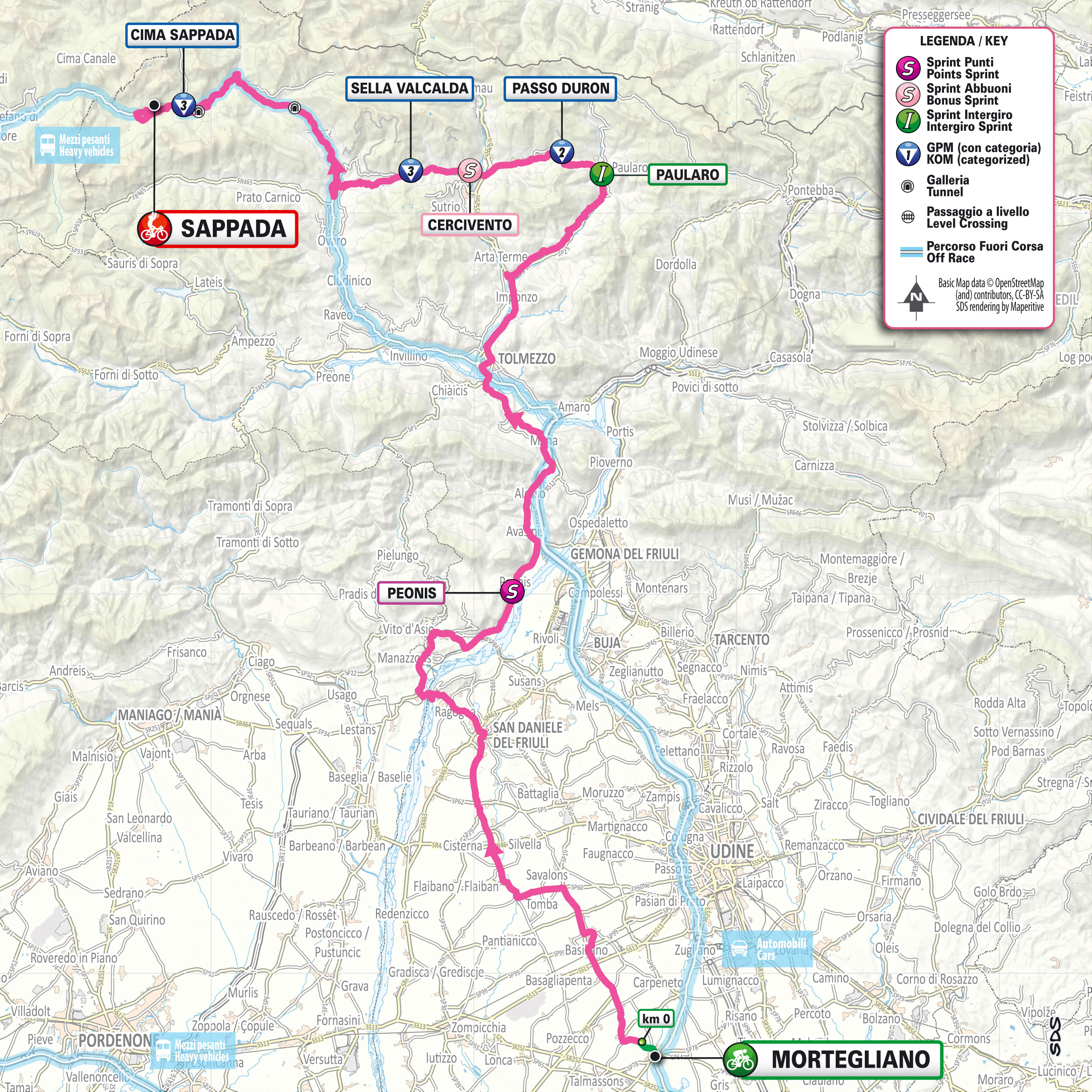



Tadej Pogačar’s Giro d'Italia press conference in Padua on Thursday began with the usual, cheerful invitation from the moderator – “Questions from the press room?” – but an uneasy silence followed. After almost three weeks of total hegemony, there seems to precious little else the maglia rosa can say about the race at this point.
A few hands were eventually raised, and a few questions were lobbed in Pogačar’s direction. There was one about Jonas Vingegaard’s Tour de France participation – “I think we will see him at the Tour at this best” – and another on Giulio Pellizzari, the man Pogačar beat on Monte Pana. There was one about the day gone by – “It was chaotic in the end” – and another about the UAE Team Emirates sprinter, Juan Sebastian Molano.
It was striking, however, that stage 19 to Sappada scarcely featured in any of the questions Pogačar faced on Thursday afternoon, either in his press conference or in his television interviews in the mixed zone.
When the Giro route was unveiled last October, Friday’s stage had peril writ large across it. This corner of Friuli has been ambush country in years past, but the potential menace has been sucked out of the day by Pogačar’s mammoth overall lead. Unlike the tight affairs of the past two years, this is a Giro utterly devoid of suspense in its final days.
Pogačar approaches the fourth weekend of the Giro with a buffer of 7:42 over Daniel Martínez (Bora-Hansgrohe) and 8:04 on Geraint Thomas (Ineos Grenadiers). Those two men are likely to joust over second place on the twin ascent of Monte Grappa on Saturday, and, at this remove, that looks set to be the only real duel in the upper reaches of the overall classification, even if Antonio Tiberi (Bahrain Victorious) may have vague designs on fourth place currently occupied by Ben O’Connor (Decathlon-AG2R).
1987 and all that
There is an irony that this Giro seems to be running out of things to say about itself just as it reaches the site of the stage that people have never stopped speaking about. In Giro lore, the very name ‘Sappada’ is a byword for polemica. No race does tales of internecine strife quite like the Giro, and the most essential addition to the canon was provided by Stephen Roche and Roberto Visentini in 1987.
Without Sappada, that year’s race would likely have been a dull one, with Carrera holding the maglia rosa for all bar three stages. Visentini and Roche had set out from San Remo notionally as co-leaders, with the hierarchy set to be decided by the San Marino time trial on stage 13. Visentini’s decisive victory there looked to have resolved the matter. Now armed with a lead of 2:42 over Roche and backed by the strongest team in the race, Visentini seemed destined to claim a second successive overall win.
Instead, the Giro and Visentini and Roche’s entire careers were altered irremediably by events on the road to Sappada two days later. To this day, everybody involved has their own version of the truth, and in some cases that truth varies depending on the audience.
What’s certain is that Visentini was caught unawares when Roche slipped into an attack on the descent of the Forcella di Monte Rest midway through the stage. When he realised what was happening, Carrera were delegated to chase Roche, who in turn resisted entreaties from manager Davide Boifava and his assistant Sandro Quintarelli to sit up and wait.
Although Visentini was in the reduced peloton that swept up Roche’s break after the Valcada, the maglia rosa’s strength suddenly deserted him on Cima Sappada, and he was already a beaten man by the time he rolled down the short, shallow descent towards the finish. When he rolled across the line seven minutes down, Roche was already being helped into the pink jersey, his pink jersey.
At the finish, Visentini limited himself to a veiled comment – “Somebody will be going home tonight” – but there was never any prospect of Carrera sending Roche home, despite the hushed conclave of management in the Hotel Corona Ferrea that night. Roche was now the favourite to win the race, after all, and the men who had chased him on the road to Sappada rowed in behind him thereafter.
A broken Visentini crashed out in the final week, and though he raced on for three more seasons, his career effectively ended there. For Roche, meanwhile, Sappada was the first firm step towards the zenith of his career, as he won the Giro, Tour de France and World Championships that year. Injuries had blighted him before and would beset him again afterwards, but in 1987, everything came up Roche.
Breakaway
37 years later, Pogačar is targeting the same Triple Crown achieved by Roche, but despite its proximity to his native Slovenia, stage 19 to Sappada won’t be anything more than a routine stop along the way.
Given the complexion of this Giro, this ought to be a stage where the break goes the distance, even if the terrain in the finale is tough enough to spark some frissons among the GC men, as the race’s last visit in 2018 proved, when Simon Yates soared to victory and Chris Froome’s hopes overall victory looked to have collapsed. An illusion, as it turned out.
Friday’s stage sets out from Mortegliano, and there is a flat opening to proceedings as the route winds through San Daniele del Friuli. The terrain becomes a little more rugged after the midpoint at Tolmezzo after 80km, with the first classified climb coming 100km into the stage on the category 2 Passo Duron (4.4km at 9.7%).
After a sinuous descent to Cercivento, the route mirrors the one faced by Roche, Visentini and company in 1987, with the climb of the category 3 Sella Valcalda followed by a drop to Comeglians. The road ascends gradually from there, eventually stiffening at the base of the climb to Cima Sappada (8.3km at 4.8%). The steepest section of 15% comes a shade over 2km from the summit. From there, it’s a gently descending 7km plateau to the finish.
When RCS Sport drew up the route, they would have hoped a stage such as this one would have inspired attacking from the GC group. Indeed, it feels like a direct response to concerns that the traditional diet of mammoth mountain stages in the third week was serving only to discourage aggression.
Given the defined nature of the overall standings, however, this stage instead looks likely to be fought over by the break. As Alessandro De Marchi (Jayco-Alula) pointed out, there has been a paucity of intermediate stages on this Giro, and the Friulan is likely to be among the would-be attackers on Friday. Other perennials, like Giulio Pellizzarri, Simon Geschke and Julian Alaphilippe also seem likely to figure.
But all, of course, will be hoping that Pogačar was not bluffing when he indicated that he is likely to keep his powder dry for Saturday’s double ascent of Monte Grappa. As if we didn’t know by now, the last word on everything at this Giro belongs to him.
Stage 19 Sprints
- Intermediate sprint, km. 56.1
- Intergiro bonus sprint, km. 100.4
- Time bonus sprint, km. 116.3
Stage 19 Mountains
- Passo Duron (cat. 2), km. 104.9 - 4.4km at 9.6%, max 18%
- Sella Valcalda (cat. 3), km. 121.7
- Cima Sappada (cat. 2), km. 150.8 - 7.4km at 5.4%, max 15%







